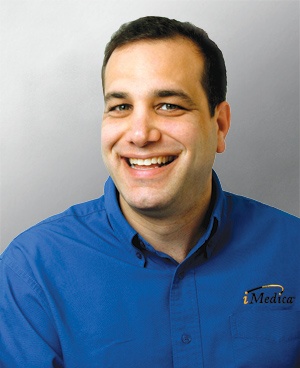
Editor’s Note: Neil Simon is Chief Operating Officer of Aprima Medical Software, a provider of electronic health record, practice management and revenue cycle management solutions for medical practices.
Though the overwhelming majority of physicians use certified electronic health records (EHR), data sharing among clinicians is still relatively uncommon. A 2015 Commonwealth Fund International Health Policy Survey found that nearly 60% of all U.S. primary care providers were unable to electronically exchange patient clinical summaries with clinicians outside their practice.
In other words, the majority of clinicians—and their patients—are still not realizing all the potential benefits of clinical data sharing, including better care coordination, a reduction in duplicative treatments and the reduced risk of medical error.
Why does the electronic sharing of data between clinicians remain such a struggle? Certainly, the difficulty of data exchange and inability of data to be delivered in a format that is meaningful to the recipient are factors. However, to truly understand the situation better, we first need to understand how and why physicians share clinical information.
Facilitating Clinical Health Data Exchange
In order to share clinical data, clinicians need the ability to pull information from other providers, as well as push information between providers.
Consider how providers have typically shared clinical data in recent years. Physicians in an emergency department, for example, might go through the time-consuming process of calling a patient’s primary care provider or faxing a request for information in order to obtain a patient’s relevant health history.
The history would then be manually keyed or scanned into the hospital’s system.
Providers must also regularly forward patient records to other providers. A referring doctor might give a patient a stack of paper records to hand the new provider or forward the records via fax. Again, the new provider must either manually key or scan the records into the practice’s EHR.
Obviously, this “old” way of pulling and pushing information is far from efficient.
When a patient shows up in an emergency department (ED), providers typically seek to pull additional clinical information that delivers a more complete picture of the patient’s health status. If the ED and primary care physician both have access to data sharing services, the ED could electronically query the system, determine where else the patient received healthcare services, and request an electronic download of relevant records.
There are currently two different initiatives moving this forward. One is CommonWell, an industry collaboration advancing the exchange of health data nationwide. The other is led by SureScripts, using its National Record Locator Service (NRLS) to provide care teams with more complete patient information. By delivering an interface and master patient index, these two projects will make it much easier for providers to query a variety of different sources, including EHRs, instead of each system making point-to-point connections. The next two years should see rapid advancements for both of these projects.
Alternatively, when a patient is referred from one provider to another, providers may use Direct Messaging to forward records securely online. Direct Messaging is a standardized protocol for exchanging clinical messages and attachments, and, under the Meaningful Use program, EHRs must have Direct Messaging capabilities for certification.
Most clinicians already have access to technologies that facilitate data exchange between other providers. However, until more clinicians adopt–and utilize–these technologies, the electronic sharing of data will not be ubiquitous.
Source of the Problem
Are clinicians not sharing data electronically because they are unwilling to use the technology or because too few providers in their network are available to share data electronically?
Consider the physician who is motivated to use Direct Messaging to share records with other providers.
In order for record sharing to occur, both the sending and receiving clinicians must both be utilizing Direct Messaging. If one of the doctors is not, then records must be sent via fax or on paper. Thus, even if a doctor is motivated to use Direct, he/she may abandon the technology if too few other providers are also using Direct.
CMS, which has long encouraged the electronic transmission of patient data, has responded to this chicken and egg conundrum by continually watering down data sharing requirements. For example, though the Direct Project was launched in 2010, 2016 was the first year that providers were required to demonstrate the use of Direct Messaging to meet objectives for the EHR Incentive Program.
Moving Forward
Until electronic data sharing is a requirement for the vast majority of clinicians, providers will continue to postpone adoption. Some health systems—as well as health IT vendors—will continue to stand in the way of data sharing in an attempt to protect their own self-interests. Ultimately, if we want widespread adoption, data sharing must be mandated.
At the same time, we need to improve the technology so that it offers real value to providers. Clinicians using certified EHRs have the capabilities they require already built into their systems. However, the format for transmitted records needs to be streamlined so physicians can easily identify the patient’s relevant issues. Extraneous information must be eliminated so that the care process is optimized.
We also need more standardization based on input from both the private and public sectors. The government needs to encourage the adoption of standards and to act as a facilitator to ensure adequate testing. Standards creation can be an overwhelming task and we must be careful not to slow the process by attempting to address every possible scenario and unique situation. Instead, we should start with simple, common use cases that satisfy the needs of a large number of providers and then build additional use cases over time.
Thanks to a variety of technology initiatives and government incentive programs, we’ve proven that electronic sharing of patient data between providers is feasible. Now it’s time to build on this early success and address both the policy changes and technological advancements required to spark widespread adoption.

